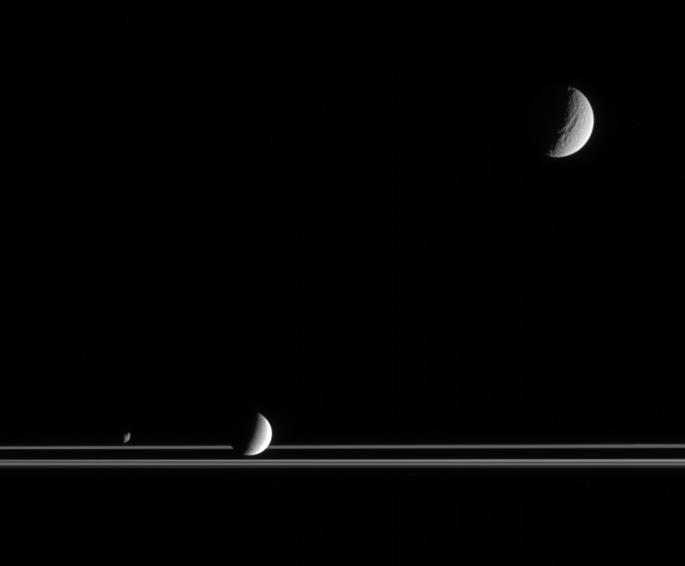Frontier Worlds

| PIA Number | PIA08165 |
|---|---|
| Language |
|
The three very different moons seen here provide targets of great interest for planetary scientists studying the Saturn system. Captured here by Cassini, along with the rings, are Tethys at upper right, Enceladus below center and Janus at lower left.
Researchers study the orbital dance of Janus (181 kilometers, or 113 miles across) with Epimetheus, tectonics and cratering on Tethys (1,071 kilometers, or 665 miles across) and geyser activity on Enceladus (505 kilometers, or 314 miles across). And these are only a few of the wonders that await exploration in the realm of the ringed planet.
The image was taken in visible light with the Cassini spacecraft narrow-angle camera on March 16, 2006, at a distance of approximately 2.4 million kilometers (1.5 million miles) from Tethys, 1.9 million kilometers (1.2 million miles) from Enceladus and 2.2 million kilometers (1.4 million miles) from Janus. The image scale is 14 kilometers (9 miles) per pixel on Tethys, 11 kilometers (7 miles) per pixel on Enceladus and 13 kilometers (8 miles) per pixel on Epimetheus.
The Cassini-Huygens mission is a cooperative project of NASA, the European Space Agency and the Italian Space Agency. The Jet Propulsion Laboratory, a division of the California Institute of Technology in Pasadena, manages the mission for NASA's Science Mission Directorate, Washington, D.C. The Cassini orbiter and its two onboard cameras were designed, developed and assembled at JPL. The imaging operations center is based at the Space Science Institute in Boulder, Colo.
For more information about the Cassini-Huygens mission visit http://saturn.jpl.nasa.gov . The Cassini imaging team homepage is at http://ciclops.org .
Credit: NASA/JPL/Space Science Institute
